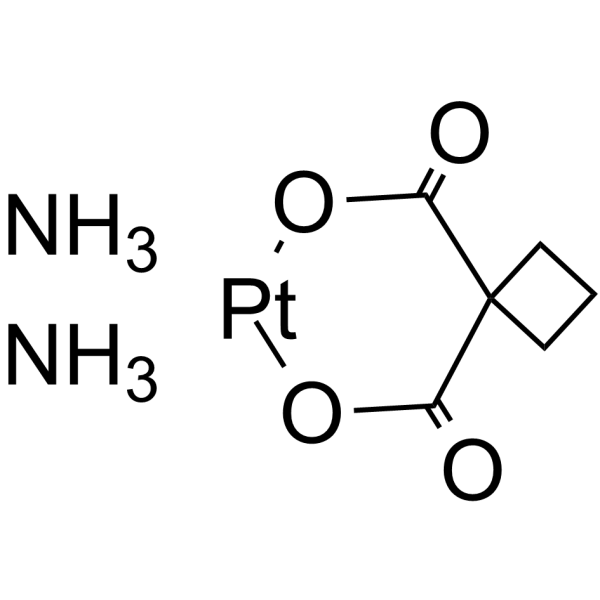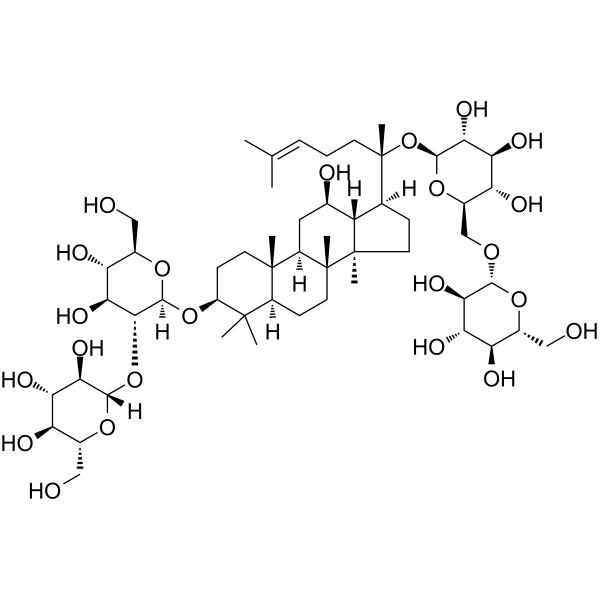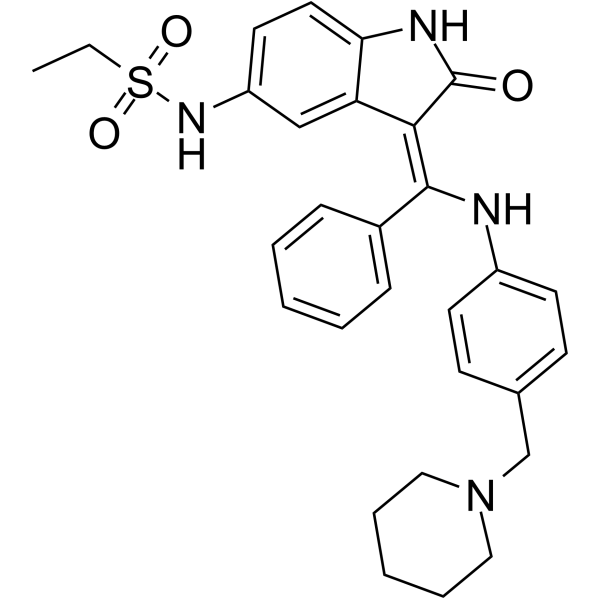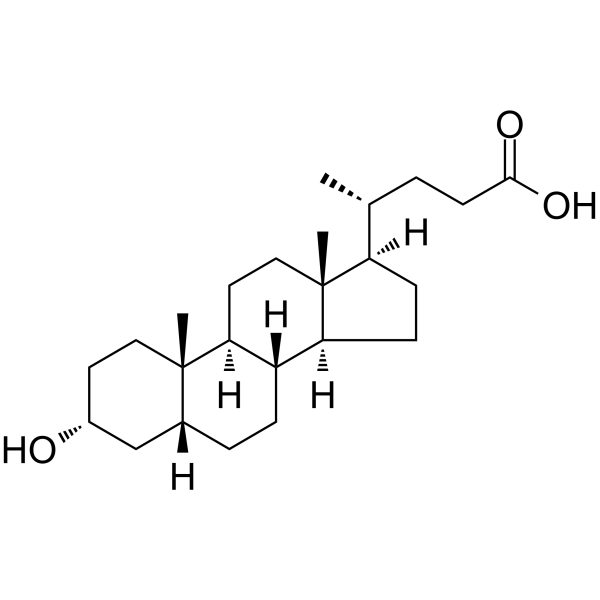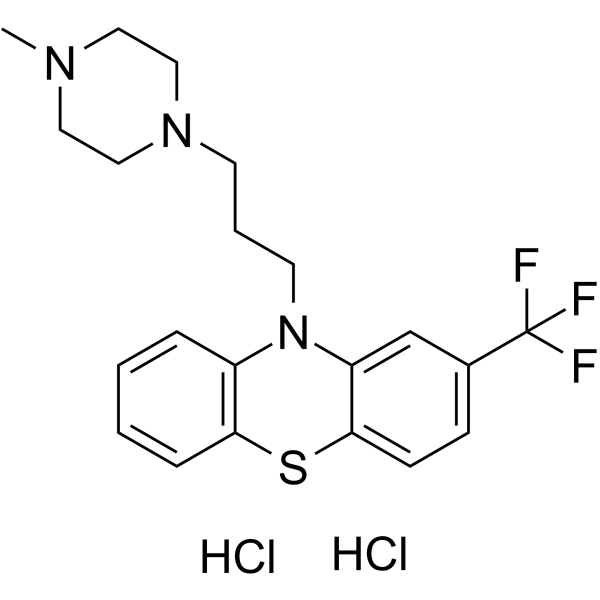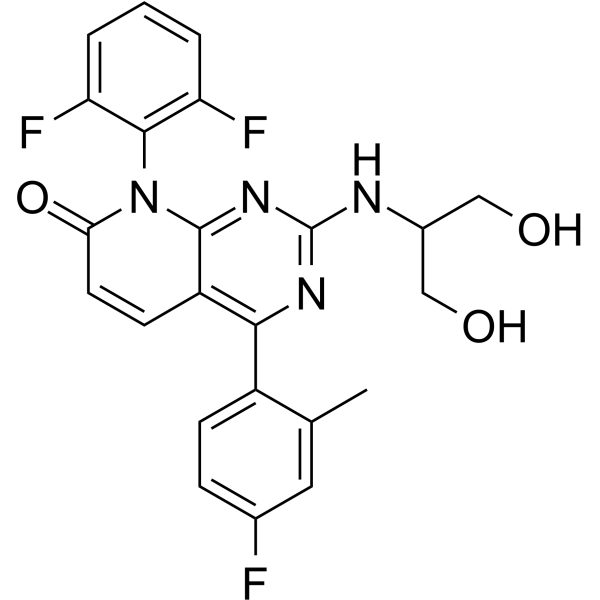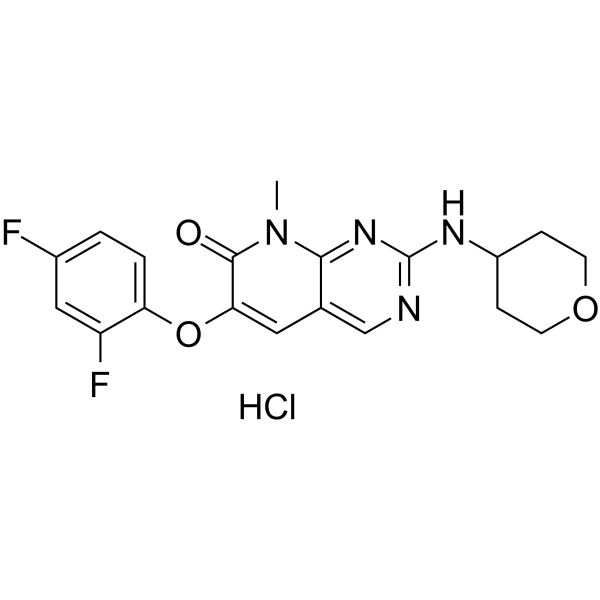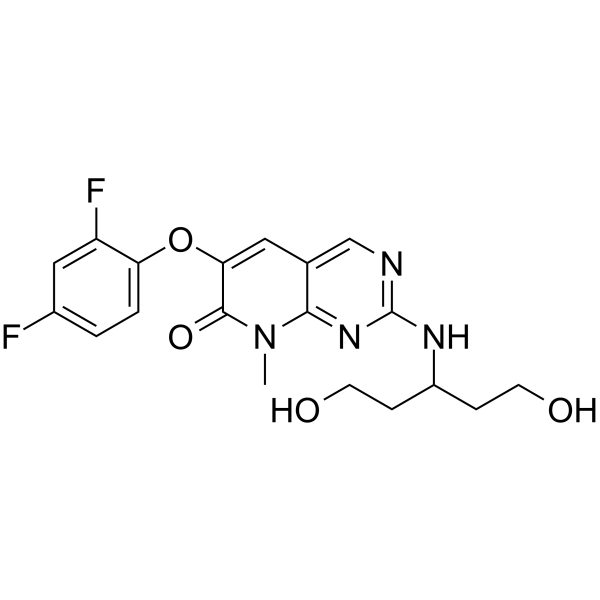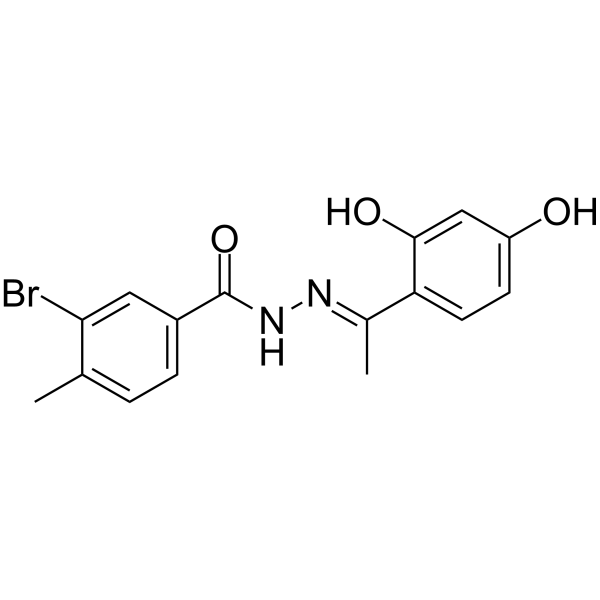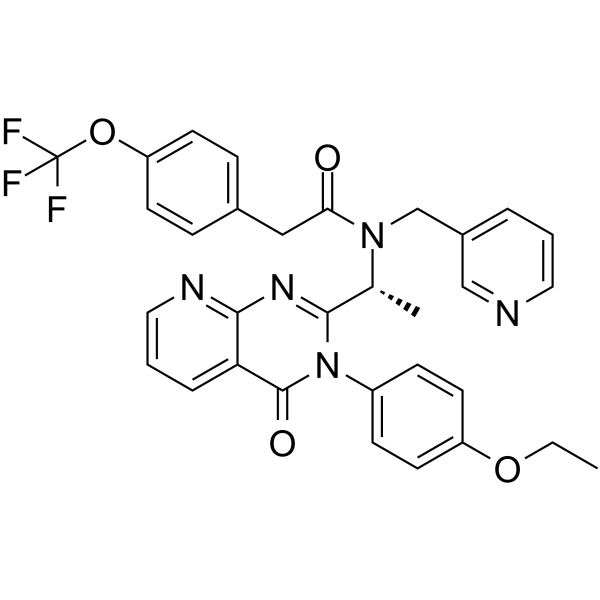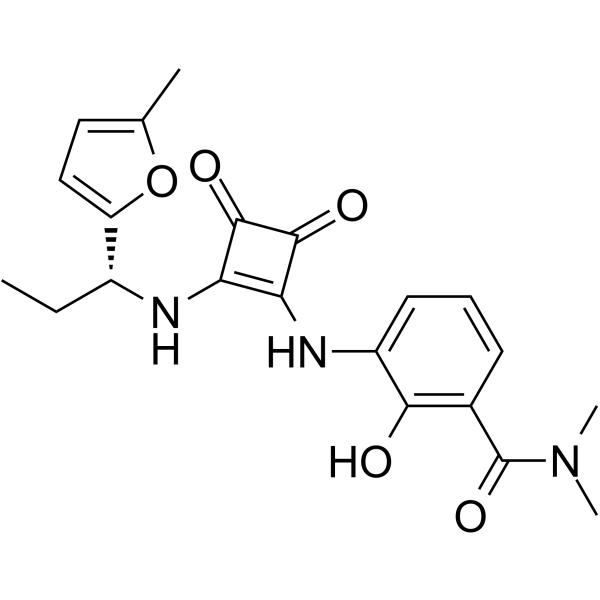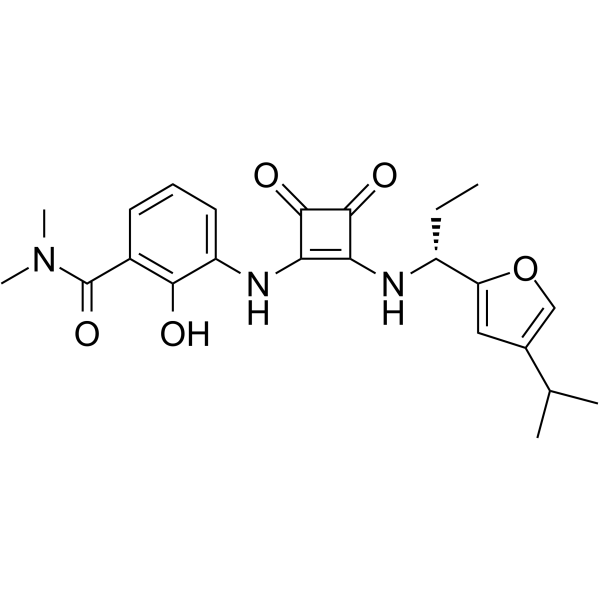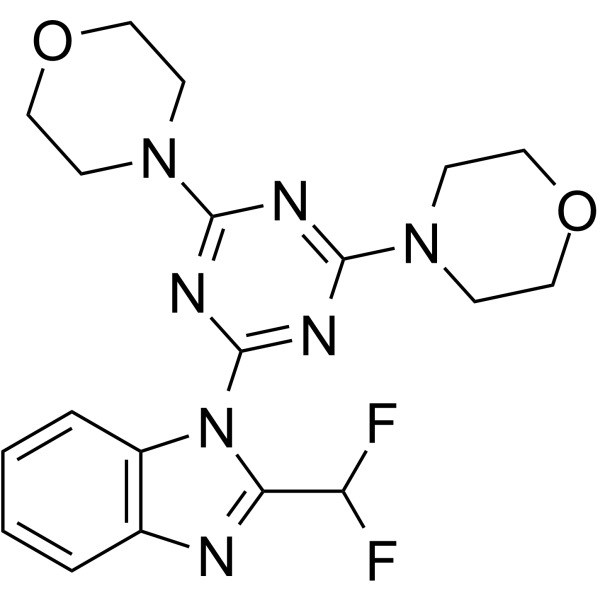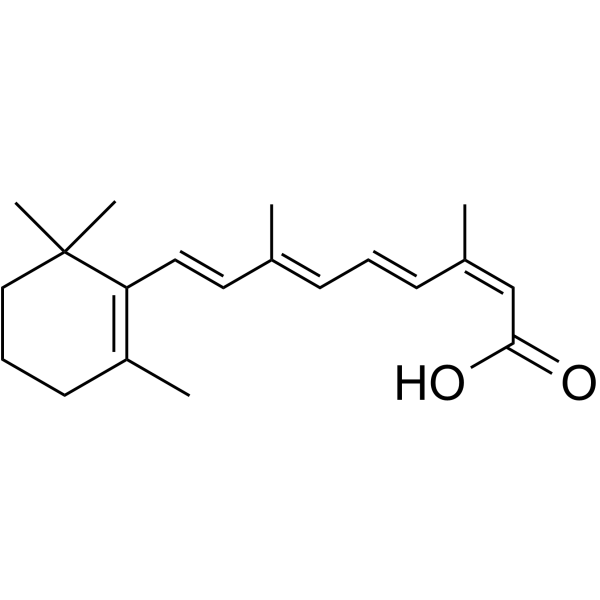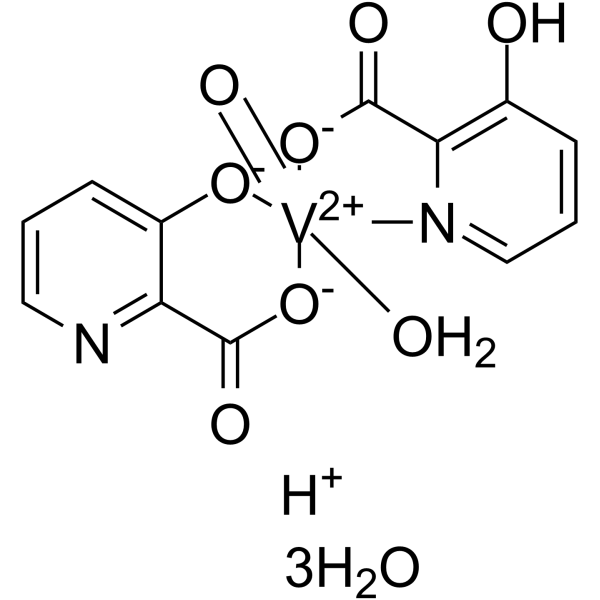|
BP12658
|
Carboplatin
|
|
|
|
|
Carboplatin is an organoplatinum compound that possesses antineoplastic activity.
|
|
BP12659
|
Ginsenoside Rb1
|
|
|
|
|
Ginsenoside Rb1 is part of a class of steroid glycosides; may have properties that inhibit or prevent the growth of tumors.
|
|
BP12660
|
Hesperadin
|
|
|
|
|
Hesperadin(IC50=250 nM) effectively inhibits Aurora B. It potently reduces the activity of AMPK, MAPKAP-K1, MKK1, Lck, CHK1 and PHK, but it could not inhibit MKK1 activity in vivo.
|
|
BP12661
|
Lithocholic acid
|
|
|
|
|
Lithocholic acid is a bile acid formed from chenodeoxycholate by bacterial action, usually conjugated with glycine or taurine. It acts as a detergent to solubilize fats for absorption and is itself absorbed. It is used as cholagogue and choleretic.
|
|
BP12662
|
PFK-015
|
|
|
|
|
PFK-015 is an effective inhibitor of PFKFB3 (IC50: 110 nM) and inhibits PFKFB3 activity in Y cells (IC50: 20 nM).
|
|
BP12663
|
Trifluoperazine dihydrochloride
|
|
|
|
|
Trifluoperazine Dihydrochloride is a potent dopamine D2 receptor inhibitor used as an antipsychotic and an antiemetic.
|
|
BP12664
|
p38-α MAPK-IN-1
|
|
|
|
|
p38-α MAPK-IN-1 is a MAPK14 (p38-α) inhibitor with IC50 of 2300 nM and 5500 nM in EFC displacement assay and HTRF assay,respectively.
|
|
BP12665
|
Dilmapimod
|
|
|
|
|
Dilmapimod is a potent inhibitor of p38 MAPK,it potentially suppresses inflammation in chronic obstructive pulmonary disease.
|
|
BP12666
|
R1487 Hydrochloride
|
|
|
|
|
R1487 (Hydrochloride) is an orally bioavailable and highly selective inhibitors of p38α.
|
|
BP12667
|
Pamapimod
|
|
|
|
|
Pamapimod (R-1503, Ro4402257) is a novel, selective inhibitor of p38 mitogen-activated protein kinase. It inhibits p38α and p38β enzymatic activity with IC50 values of 0.014±0.002 and 0.48± 0.04 microM, respectively with no activity against p38delta or p38 gamma isoforms.
|
|
BP12668
|
Obeticholic Acid
|
|
|
|
|
Obeticholic acid is a Farnesoid X Receptor Agonist. The mechanism of action of obeticholic acid is as a Farnesoid X Receptor Agonist.
|
|
BP12669
|
mTOR inhibitor-1
|
|
|
|
|
C-4 is a potential ATP-competitive inhibitor of mTOR. C-4 could inhibit cell growth and proliferation.
|
|
BP12670
|
AMG 487
|
|
|
|
|
AMG 487 is a potent and selective antagonist of chemokine (C-X-C motif) receptor 3 (CXCR3) which inhibits the binding of CXCL10 and CXCL11 to CXCR3 with IC50s of 8.0 and 8.2 nM, respectively.
|
|
BP12671
|
Navarixin
|
|
|
|
|
Navarixin(SCH527123) is a novel, selective CXC chemokine receptor 2(CXCR2) antagonist that inhibits neutrophil activation and modulates neutrophil trafficking in animal models, characteristics that may be beneficial in the treatment of conditions with unbalanced pulmonary neutrophilia.
|
|
BP12672
|
SCH 563705
|
|
|
|
|
SCH 563705 is an effective and orally available CXCR2 and CXCR1 antagonist (IC50s: 1.3 nM, 7.3 nM and Kis of 1 and 3 nM, respectively).
|
|
BP12673
|
Chenodeoxycholic acid
|
|
|
|
|
Chenodiol is a bile acid, usually conjugated with either glycine or taurine. It acts as a detergent to solubilize fats for intestinal absorption and is reabsorbed by the small intestine. It is used as cholagogue, a choleretic laxative, and to prevent or dissolve gallstones.
|
|
BP12674
|
ZSTK474
|
|
|
|
|
PI3K Inhibitor ZSTK474 is an orally available, s-triazine derivative, ATP-competitive phosphatidylinositol 3-kinase (PI3K) inhibitor with potential antineoplastic activity.
|
|
BP12675
|
3'-Hydroxypterostilbene
|
|
|
|
|
3'-Hydroxypterostilbene, a natural pterostilbene analogue, effectively inhibits the growth of human colon cancer cells with IC50s of 9.0, 40.2, and 70.9 μM for COLO 205, HCT-116, and HT-29 cells, respectively, by inducing apoptosis and autophagy. 3'-Hydroxypterostilbene inhibits the p38MAPK, and PI3K/Akt/mTOR/p70S6K pathways and activates the ERK1/2, JNK1/2 MAPK pathways.
|
|
BP12676
|
Isotretinoin
|
|
|
|
|
Isotretinoin binds to and activates nuclear retinoic acid receptors (RARs); activated RARs serve as transcription factors that promote cell differentiation and apoptosis. Isotretinoin is a naturally-occurring retinoic acid with potential antineoplastic activity. This agent also exhibits immunomodulatory and anti-inflammatory responses and inhibits ornithine decarboxylase, thereby decreasing polyamine synthesis and keratinization.
|
|
BP12677
|
VO-Ohpic trihydrate
|
|
|
|
|
VO-Ohpic is a potent inhibitor of PTEN (phosphatase and tensin homolog) with IC50 of 35 nM.
|
